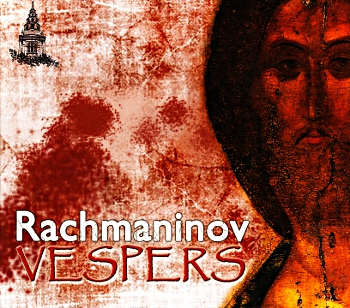CHOIR RECORDINGS

Rachmaninov: Vespers
Recorded in St Bride’s Church on 20th, 21st, 22nd January 2011

Recording Information
Director of Music: Robert Jones
Producer: Benjamin Rayfield
Engineer: Edward Armitage
Track List
- Priidite, poklonimsja
- Blagoslovi, dushe moja
- Blazhen muzh
- Svete tikhij
- Nyne otpushchaeshi
- Bogorodice Devo, radujsja
- Shestopsalmie
- Khvalite imja Gospodne
- Blagosloven esi, Gospodi
- Voskresenie Khristovo videvshe
- Velichit dusha Moja Gospoda
- Slavoslovie Velikoe
- Tropar’, “Dnes’ spasenie”
- Tropar’, “Voskres iz groba”
- Vzbrannoj voevode

Programme Notes
By the time he left Russia in 1917, Rachmaninov was greatly admired as a celebrated composer, conductor of the Bolshoi Theatre and an internationally touring virtuoso pianist. The Vespers op. 37 were written in less than two weeks in early 1915, but he probably envisaged it while working on The Liturgy of St John Chrysostom op. 31 (1910). In these two large-scale religious works Rachmaninov took Russian liturgical music to a new level, combining ancient Russian chant and folklore with Western polyphony.
The All-Night Vigil (Vsenoshchnoe Bdenie) known in the West as Vespers, is sung in Russian Orthodox churches and monasteries on the eve of holy days. In monasteries the service would start at 6 o’clock on Saturday evening and end at 9 the following morning, embracing both Vespers and Matins. Traditionally, nine of the numbers must be set to traditional chants, but the remaining six could be treated more freely by employing newly composed melodies. Ancient Znamenny , Kievan and Greek chants were transformed by the composer from single, repeated melodies into rich, polyphonic tapestries. These ancient chants, pearls of Russian religious music, were taught to Rachmaninov at the Moscow Conservatoire by S. V. Smolensky, to whom this work is dedicated.
The Vigil was premiered by Moscow Synod Choir under Nikolai Danilin in Moscow on 10th March 1915. Both public and critics were so enthusiastic that four more performances were arranged immediately, but the success was short-lived. Rachmaninov and his family left Russia on December 23, 1917, never to return. Despite the October revolution the Vigil was still occasionally performed until 1926, but it was not until the 1960s that it was performed again and recorded by leading Russian choirs. The Vigil is a glorious tribute to the rich tradition of Russian church music.
VIEW AND LISTEN TO OTHER RECORDINGS

STAY UP TO DATE
WITH NEWS FROM ST BRIDE’S
Subscribe to our newsletter to receive alerts for
events and advance information about seasonal services.
We protect your data and never overwhelm your inbox.
SUBSCRIBE